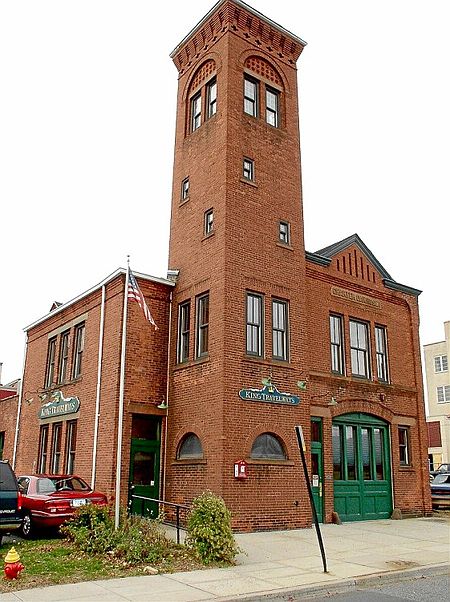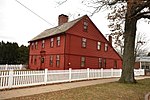Charter Oak Firehouse
Buildings and structures in Meriden, ConnecticutDefunct fire stations in ConnecticutFire stations completed in 1876Fire stations on the National Register of Historic Places in ConnecticutGovernment buildings completed in 1876 ... and 1 more
National Register of Historic Places in New Haven County, Connecticut

The Charter Oak Firehouse is a historic former fire station at 105 Hanover Street in Meriden, Connecticut. Built in 1876, it was the first firehouse built in Meriden, and is the oldest surviving municipal building in the city. The firehouse was listed on the National Register of Historic Places on March 17, 1994. It has been converted to offices.
Excerpt from the Wikipedia article Charter Oak Firehouse (License: CC BY-SA 3.0, Authors, Images).Charter Oak Firehouse
Hanover Street, Meriden
Geographical coordinates (GPS) Address Nearby Places Show on map
Geographical coordinates (GPS)
| Latitude | Longitude |
|---|---|
| N 41.536666666667 ° | E -72.806666666667 ° |
Address
Hanover Street
06451 Meriden
Connecticut, United States
Open on Google Maps







